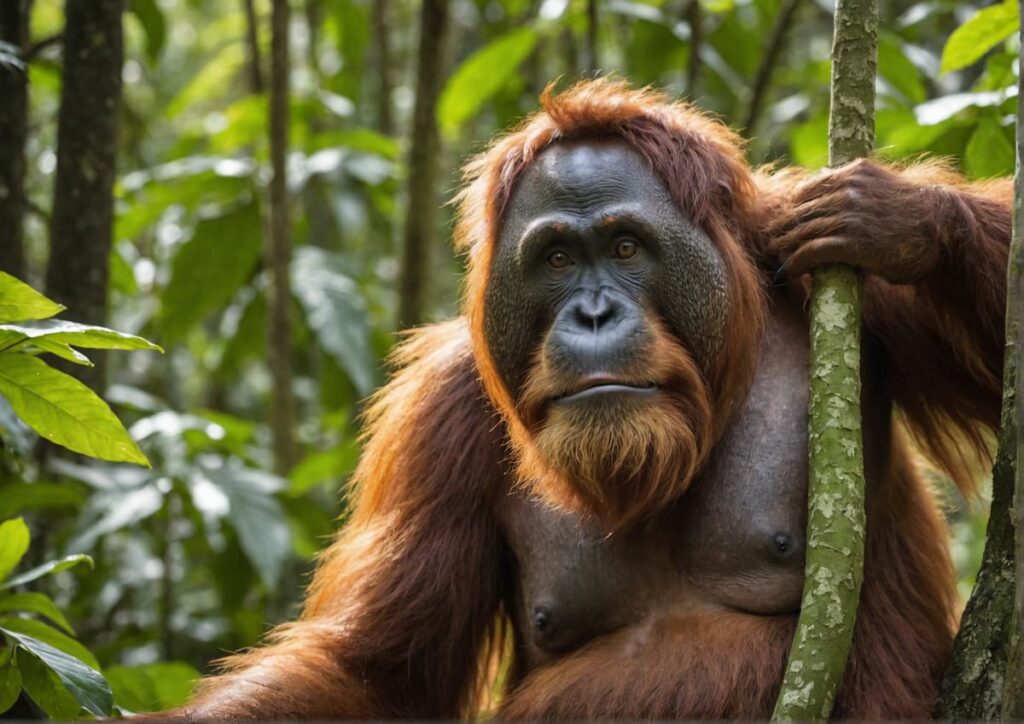A group of researchers observed Rakus, a male Sumatran orangutan, using methods to heal a facial wound on his own. We are talking about a finding that reinforces the evolutionary connection between humans and great apes. The event occurred in June 2022 within the dense jungles of Gunung Leuser National Park in Indonesia. We are talking about the first time that the use of a biologically active plant to treat injuries among great apes has been documented.

To heal your wound, Rakus used Akar Kuning, a climbing plant famous for its analgesic and antipyretic properties.. The ape used this resource to treat his injury intentionally and meticulously. This process began when the orangutan chewed the leaves of the plant, extracting and repeatedly applying the sap to its wound. Afterwards, he covered the lesion with a paste made from the chewed leaves themselves. For humans, this plant is not only a traditional remedy for diseases such as dysentery, diabetes and malaria. And now it also reveals its medical usefulness for great apes.
Isabelle Laumer, postdoctoral researcher at the Max Planck Institute for Animal Behavior and lead author of the study, shared his excitement about the discovery. Not only does he highlight the ability of orangutans to use natural resources to benefit their own health, he also suggests a skill comparable to human wound treatment practices.
Rakus’s application of Akar Kuning lasted several minutes, a testament to the animal’s deliberate and conscious methodology. Besides, points out a possible individual innovation or cultural legacy within your group. Laumer suggests that Rakus may have accidentally discovered the plant’s analgesic properties by touching his wound while he chewed it. Or perhaps he observed and learned this behavior from other orangutans in his environment.
This behavior is especially significant given that physical conflicts and resulting injuries are rare among orangutans in areas such as Gunung Leuser National Park, where food availability and high social tolerance minimize violent confrontations. This context, combined with the group’s hierarchical stabilities, contributes to the rarity of such observations.
The study by Laumer and his team adds an important dimension to the knowledge of self-medication in animals, alluding not only to the practice of consuming or applying plants for healing purposes, but also to direct and conscious intervention in the treatment of wounds. This could suggest, as the researcher explains, a common origin in the ancestors of humans and orangutans with regard to the treatment of injuries.
With these observations, researchers hope to continue monitoring other orangutans in the region to determine whether this behavior is an isolated incident or part of a larger pattern of self-treatment. Furthermore, these findings not only highlight the intelligence and adaptability of orangutans, they also reveal how similar we can be and the importance of preserving these beings deeply connected to us in their natural habitat.
Laumer’s study emphasizes the urgent need to raise awareness about the critically endangered status of these animals.




